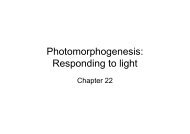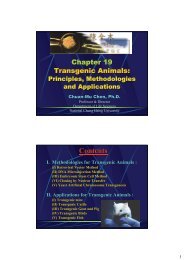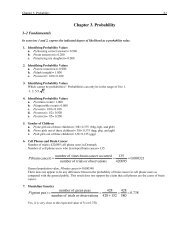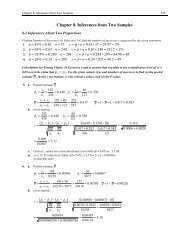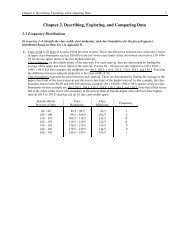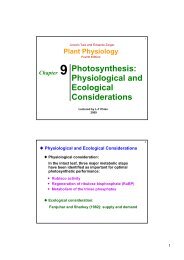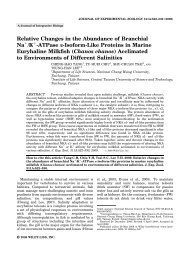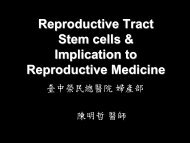Chapter 7. Hypothesis Testing with One Sample
Chapter 7. Hypothesis Testing with One Sample
Chapter 7. Hypothesis Testing with One Sample
You also want an ePaper? Increase the reach of your titles
YUMPU automatically turns print PDFs into web optimized ePapers that Google loves.
210 <strong>Chapter</strong> 7: <strong>Hypothesis</strong> <strong>Testing</strong> <strong>with</strong> <strong>One</strong> <strong>Sample</strong>In a left-tailed test at the 0.01 significance level, the critical value is −z α=−z .01=−2.33.Since this is a left tailed test, the P-value is the area to the left of the test statistic. Using Table A-2, we findthat the P − value = 0.1093.We fail to reject the null hypothesis.There is not sufficient sample evidence to support the claim that the percentage of users of Ziac whoexperience dizziness is less than 5%.14. Aviation FatalitiesFirst, we check the requirements. The sample does not appear to be a simple random sample, but the incidentsmay comprise a random sample that is representative of the population. The conditions for a binomial aresatisfied. The sample size is 8411 <strong>with</strong> the claim that the percentage of crash landings that result in a fatality isgreater than 5%, making p = 0.05, so np = 8411× 0.05 = 420.55 and nq = 8411× 0.95 = 7990.45. Therequirements are satisfied.The claim is that pilots die in more than 5% of all crash landings, so this is a right-tailed test. In the sample,437 pilots died in crash landings. The sample proportion is p ˆ = x / n = 437 /8411 = 0.05196.H 0 : p = 0.05H 1 : p > 0.05The test statistic is z = p ˆ − p 0.05196 − 0.05= = 0.825pq 0.05× 0.95n 8411In a right-tailed test at the 0.06 significance level, the critical value is z α= z .06= 1.555.Since this is a right tailed test, the P-value is the area to the right of the test statistic. Using Table A-2, we findthat the P − value = (1 − 0.7967) = 0.2033.We fail to reject the null hypothesis.There is not sufficient sample evidence to support the claim that pilots die in more than 5% of all crashlandings. However, we cannot conclude that the fatality rate does not exceed 5%, since all we have seen is thatthere is not enough to show the rate exceeds 5%. It still might. We simply don’t have enough evidence in thissample.15. Air-Bag EffectivenessFirst, we check the requirements. The sample does not appear to be a simple random sample, but the incidentsmay comprise a random sample that is representative of the population. The conditions for a binomial aresatisfied. The sample size is 821 <strong>with</strong> the claim that the air-bag hospitalization rate is lower than <strong>7.</strong>8%, makingp = 0.078, so np = 821× 0.078 = 64.038 and nq = 821× 0.922 = 756.962. The requirements are satisfied.The claim is that the air-bag hospitalization rate is lower than <strong>7.</strong>8%, so this is a left-tailed test. The sampleproportion is p ˆ = x / n = 46 /821 = 0.0560.H 0 : p = 0.078H 1 : p < 0.078The test statistic is z = p ˆ − p =pqn0.0560 − 0.0780.078 × 0.922821=−2.351In a left-tailed test at the 0.01 significance level, the critical value is −z α=−z .01=−2.33.Since this is a left tailed test, the P-value is the area to the left of the test statistic. Using Table A-2, we findthat the P − value = 0.0094.We reject the null hypothesis.The sample data support the claim that the air-bag hospitalization rate is lower than the <strong>7.</strong>8% rate for crashesof midsized cars equipped <strong>with</strong> automatic safety belts.




